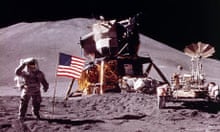The gloves are off in the new space race. On April 18th, 2024, Bill Nelson, Administrator of NASA, expressed concerns that China’s seemingly civilian space program might be a smokescreen for military objectives.
This raises the question: is China using space for peaceful exploration or harboring hidden military ambitions?

Secrecy Fuels Suspicion
During a congressional budget hearing, Nelson pointed to China’s rapid advancements and extreme secrecy surrounding their space endeavors. China has made significant strides in recent years, developing powerful rockets, reusable spacecraft, and a space station rivaling the International Space Station (ISS).
However, the lack of transparency surrounding these developments raises suspicion. Nelson emphasized the importance of peaceful space exploration and urged China to embrace this ideal. Unfortunately, he acknowledged a lack of evidence suggesting China would shift its focus.
The Moon Landing Race Heats Up: A Race for Resources and Geopolitical Prestige
The competition intensifies as both the US and China aim to put astronauts back on the moon.
The US Artemis 3 mission targets 2026, while China has set its sights on 2030. This renewed lunar race is driven by more than just scientific curiosity. The moon may hold valuable resources like water ice, helium-3, and rare earth elements, potentially fueling future space exploration endeavors and technological advancements. Additionally, establishing a permanent human presence on the moon could hold significant geopolitical prestige.
Nelson stressed the need for the US to maintain its “global edge” in space exploration, particularly regarding lunar missions. He expressed his biggest fear – China potentially claiming lunar territory if they land first.
Is the US Losing Its Edge in Space?
Nelson expressed confidence in the US maintaining its competitive edge. However, he acknowledged the significant resources China has poured into its space program, highlighting their potential for rapid growth.
This development underscores the importance of continued US investment and innovation in space exploration. While NASA has a long history of groundbreaking achievements, continued budgetary support and fostering a culture of innovation will be crucial to staying ahead in the space race.
Beyond the Moon: The Broader Landscape of Space Exploration
While the moon landing is a significant milestone, it’s merely one step in humanity’s journey into the cosmos. Both the US and China, along with other spacefaring nations like Japan, India, and the European Space Agency (ESA), are likely to focus on several key areas:
- Establishing a permanent human presence on the moon: This could involve lunar bases or outposts, facilitating further exploration, scientific research, and potentially resource extraction.
- Exploiting lunar resources: The moon may hold valuable resources like water ice, helium-3, and rare earth elements. Water ice could be broken down into hydrogen and oxygen, essential for rocket fuel and life support systems. Helium-3 is a potential fuel source for future fusion reactors, and rare earth elements are critical components in many modern technologies.
- Exploring Mars and beyond: Sending crewed missions to Mars and beyond remains a long-term goal for many space agencies. Technological advancements and resource gathering on the moon could pave the way for these ambitious missions.
The Importance of International Cooperation: Can Competition Coexist with Collaboration?
Despite the current competition, international collaboration remains crucial for the advancement of space exploration. Sharing knowledge and resources could accelerate progress in areas like space debris mitigation, developing safety protocols for deep space exploration, and fostering peaceful use of space for the benefit of all humankind. Treaties like the Outer Space Treaty, which prohibits the placement of weapons of mass destruction in space, are essential for maintaining peace and stability in the final frontier.
The Road Ahead: A Future Filled with Discovery
The future of space exploration promises to be exciting and transformative. As the US and China compete and potentially collaborate, the next few decades could witness significant breakthroughs in our understanding of the universe, the potential for resource harvesting in space, and the possibility of establishing a permanent human presence beyond Earth.
Stay Curious, Stay Informed
Science X Daily will continue to provide in-depth coverage of space exploration developments. Stay tuned for updates on the US-China space race, upcoming missions like Artemis 3, groundbreaking discoveries, and the ever-evolving landscape of international cooperation in space exploration. As we venture further into the cosmos, the possibilities are truly endless.
In conclusion, the space race between the US and China reveals a complex blend of scientific ambition, geopolitical strategy, and the pursuit of resources.
While concerns about militarization persist, international cooperation remains essential for peaceful exploration.
As we look to the future, the promise of space holds immense potential for discovery and collaboration, guiding us towards a shared cosmic journey. Stay informed with Science X Daily for the latest updates on space exploration.



















